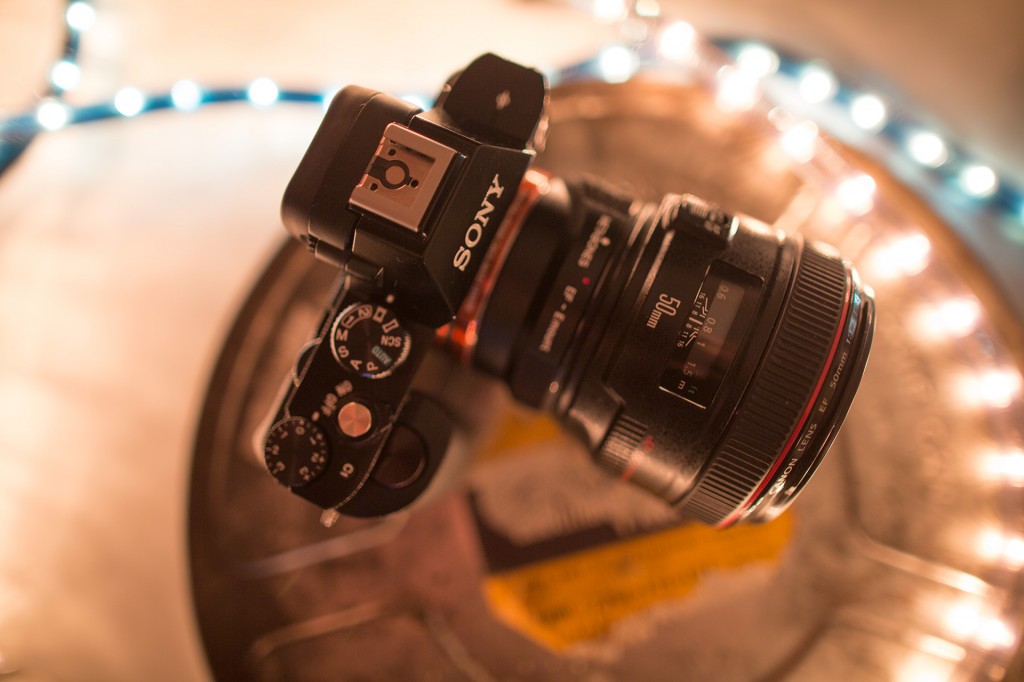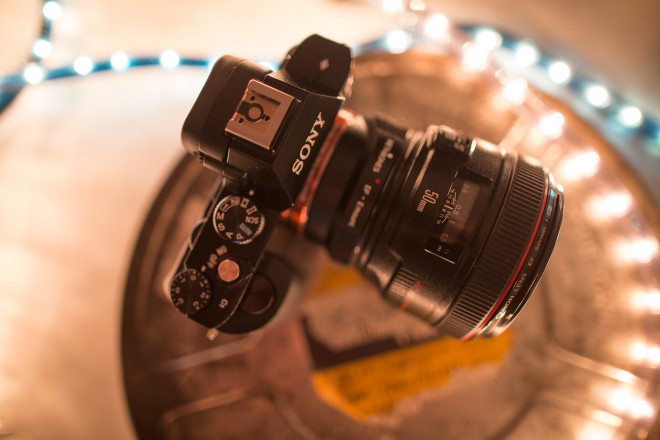
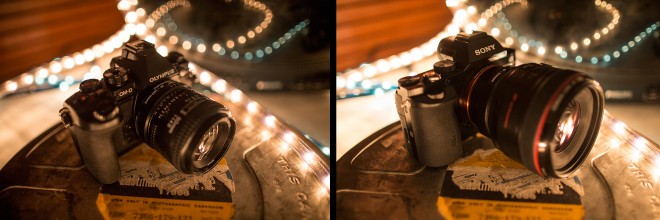
Can Olympus survive? The scandal is over, but sales are faltering. Their prized position in the mirrorless market is threatened by a revitalised Sony and their Alpha range. This supersedes the high end of the NEX line (and dispenses with the NEX brand altogether); bringing full frame sensors to the table and in the case of the A7R – 36MP and nearly 14 stops dynamic range.
My full review of the Sony A7R is coming soon, ditto for the E-M1.
Until then let’s take a look at how the top of the range mirrorless cameras perform head to head – not just at video but stills too.
Something about the A7R left me yearning for a proper DSLR over Christmas so I went out and bought a Nikon D700. Despite being older than the DSLR video revolution itself this camera still holds up today for stills and it has much better AF than the Nikon Df, for a lot less money. It also lacks a video mode like the Df! Pure photography!
Why does the Sony A7R leave me, a big mirrorless fan, yearning to shoot stills on a D700 and video on a 5D Mark III?
The sensor it has to be said is amazing – 36MP and nearly 14 stops dynamic range from a full frame sized CMOS behind a mirrorless mount with no mirror to get in the way of your Leica M glass, the best glass you can buy, with the best sensor yet made. In theory it’s a good start!
But the A7R falls down badly when it comes to the initial Sony full frame E-mount lens range. There’s only four of them. Only two feature stabilisation. They are all over priced. The standard 55mm F1.8 is £950 with no cheaper option. Neither the 35mm F2.8 or 55mm primes have stabilisation. To make matters worse the A7R has no in-body stabilisation like the A99, not even electronic stabilisation in video mode like the RX1. That’s nuts! If you’re not using one of Sony’s zoom lenses with stabilisation, you miss out altogether.
This is where the Olympus OM-D E-M1 puts up a big attack. The latest generation of 5 axis stabiliser is a joy to use. It’s improved over the E-M5 with less of a crop in video mode and refined performance. It’s the only camera you don’t need a rig for to shoot smooth handheld footage with. You can shoot a whole film with the E-M1 from the palm of your hand if you really want to. As long as the ambition of your shots don’t call for cranes or a MoVi, the results will be very cinematic. That is a BIG thing.
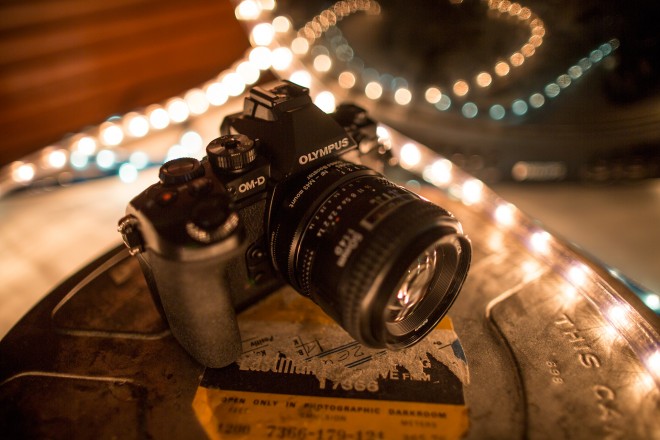
It has another major trick up it’s sleeve and that is a rolling crop mode which can be toggled on and off DURING a shot. You have a green box and it can be moved around the frame. This can zoom in on any area of interest anywhere in the frame and give you a Blade Runner style enhancement of the area with plenty of extra detail. Usually this kind of reframing ability is limited to post production with suitable 4K material. Here the E-M1 is doing it live in the midst of the action. Detail in the crop mode is not as fine as the GH3’s but overall video quality is right up there. You can’t toggle crop mode on the GH3 in the middle a shot, you have to start a new recording.
Moire and aliasing has been reduced since the E-M5 and the codec is far less muddy this time around, with smoother gradation. The bitrate has been bumped up slightly and the image processor is brand new.
I’m actually quietly impressed with the E-M1 in terms of video quality. As long as you grade the E-M1’s footage lightly with Film Convert using the GH3 preset and avoid dialling the codec down flat with -2 contrast and sharpness in-camera as is the received wisdom, the results look lovely. It doesn’t have the dynamic range or professional codec of the Blackmagic Pocket Cinema Camera but in every single other aspect it’s leaps and bounds more advanced.
The A7R on the other hand simply serves up the same video as the Nikon D800 but with a worse codec.
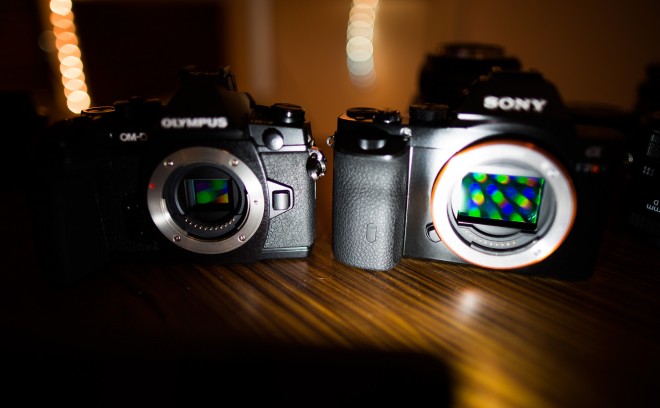
I find I’m getting the best results on the E-M1 by using the Vivid picture profile with contrast dialled down (but nowhere near as flat as Natural with contrast on -2), sharpness at default and then Film Convert with the GH3 Vivid preset over the top in Premiere CC.
Surprisingly given the difference in sensor size (but not as surprisingly given the megapixel count), the E-M1 walks all over the A7R’s video output at high ISOs. The A7R is almost unusable at ISO 3200 and the E-M1 is as clean as a whistle. I’ll be looking more closely at this in my full review, it’s a big difference.
With the Metabones Speed Booster adapter the E-M1 gains a stop and measures in at a 1.4x crop in terms of sensor size, larger than Canon APS-C at 1.6x and much closer to full frame than the 2x crop Micro Four Thirds standard with no adapter.
It’s the lenses that make the most difference here and I feel Micro Four Thirds is coming on song. There are far more native mount lenses for the OM-D system than there are for Sony E-mount.
With Speed Booster on the E-M1 do I find myself missing the full frame look of the A7R? Not really!
Built in EVFs
The biggest improvement to the E-M1 over the old E-M5 aside from ergonomics are the improved EVF and LCD screen. These are gorgeous and go some way to justifying the E-M1’s surprisingly high price tag. The Sony A7R also has a top of the range OLED viewfinder. Yet overall the E-M1’s EVF is even better. Performance is similar in terms of size, contrast (with a slight edge to the A7R in terms of inky blacks) and detail but the E-M1’s feels more comfortable to use and has a softer eye cup.
One of the reasons it’s so comfortable to use is that the 5 axis stabiliser system damps out all the jitter and movement whilst you frame a shot, making manual focus much less awkward. The A7R’s EVF jitters around and smears whilst you’re focussing and framing the shot especially with long lenses. OIS lenses for Sony full frame E-mount are in very short supply. For just $50 you can put a Canon FD lens on the E-M1 and it will be stabilised better than a $3000 professional sports Canon L series lens with OIS. And they say $1400 for a Micro Four Thirds camera is ‘too much’.
Compared to an optical viewfinder, the EVFs have the advantage of being much brighter in low light, and giving an accurate impression of depth of field and bokeh at faster apertures than F2.8.
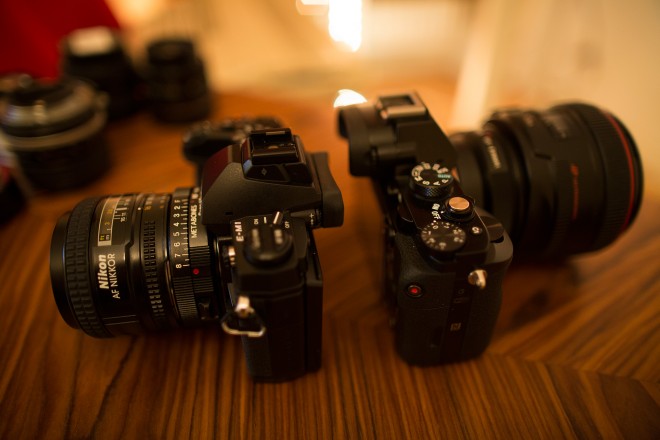
Handling
The A7R’s ergonomics are a bit suspect. A lot has been said about the A7R being great to handle. I’m not sure I agree. It’s as uncomfortable in the hand as it is plain to look at. The smooth black finish attracts loads of finger prints and it has ridges jutting out where they shouldn’t and controls crammed too close together. The entire left top plate isn’t used and the front of the camera has a single dial and just one button to release the lens. Instead the E-M1 has a Nikon DSLR style control on the left of the top plate and two programmable buttons near the lens mount, again a but like on a Nikon D800.
The A7R has a ridge in the way of the rear command dial, whereas on the E-M1 the grip drops away towards the dial. Little things like this make a big difference when you are holding and using it for long stretches at a time. The shutter release button is nicely forwards under your finger on the E-M1’s extended grip but on the A7R it’s further back and feels more awkward, as does the video record button on the shoulder of the grip. This button on the A7R is almost impossible to trigger with your right hand whilst holding the camera with one hand on the lens. The A7R’s body is a two handed affair while ideally you need one hand on the lens for focus.
The shutter is a LOT quieter on the E-M1 than on the A7R yet offers the same performance – right up to 1/8000 speed.
Lenses and AF
The A7R is really a manual focus affair for stills and on full frame I find myself needing AF for stills because it’s just too laborious to nail focus at fast apertures with a large sensor. I’ve missed plenty a moment trying to nail manual focus. There are numerous lenses for Micro Four Thirds with AF including plenty of fast primes. Not so on Sony FE mount.
My best full frame lenses, the Canon 24mm F1.4L, 50mm F1.2L and 85mm F1.2L all feel unbalanced on the A7R because the body is so small and the lenses so front-heavy with those huge elements. I’d rather use these on my 5D Mark III if I want full frame. The Olympus 12mm F2.0 (24mm wide angle), Voigtlander 25mm F0.95 (fast 50mm equivalent) and Nikon 50mm F1.4 on Speed Booster (around 70mm F2.0 equivalent on full frame) are all MUCH smaller and lighter on the E-M1 than the equivalents on the A7R. There’s no point having a smaller camera like the A7R with huge lenses and adapters on the front.
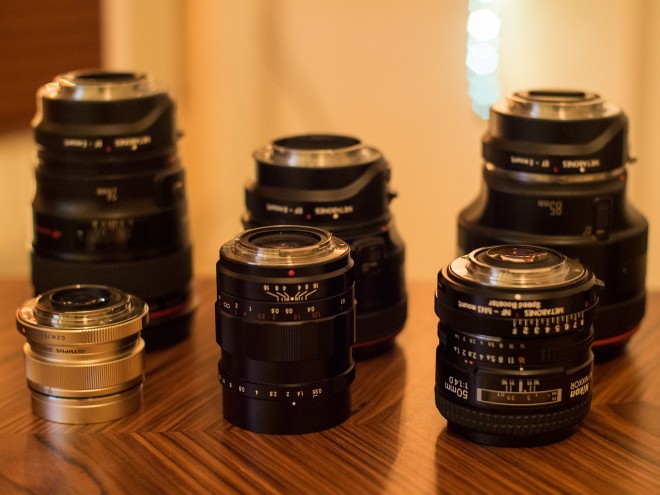
Above: Canon lenses pictured with necessary adapter to E-mount
Sony have a 24-70mm F4 for their new FE mount with OIS and fast AF but I’d rather spend the money on the Sigma 18-35mm F1.8 and put it on the E-M1 where with Speed Booster it becomes a 26-52mm F1.3!
So far then, I am leaning towards the E-M1 as the best but does the A7R have anything in it’s arsenal apart from sensor size to fight back?
Check back soon for the footage and full reviews.



